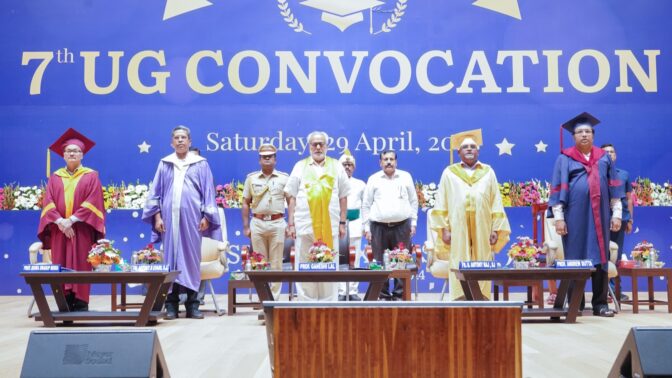What is OnePlus One? For this question, I am sure the responses will be part of following three categories (in random order) –
- OnePlus One is Two. This actually happened. I had asked this question to an 8th grade student. Incorrect target audience, I guess.
- Yes I know. It’s a mobile phone right? Made in China. I heard that it is cheaper with a lot of features. It’s also available only on Amazon right? And you need an invite code to buy it. Isn’t that weird? I mean, why would you disallow users from buying it directly?
- Ohh yes, I have heard of it. It’s a flagship killer. It has (almost) all the features you find in top notch phones from Apple, Samsung, HTC and LG. They hardly market their product and hence their costing is highly competitive compared to the flagships from top handset manufacturers! And now they are coming with OnePlus 2! And the launch is using a VR cardboard. Isn’t that awesome?
If you are working in the telecom industry and/or have an interest in the sector, there are strong chances you have come across this new handset brand. And it’s not just another handset manufacturer having umpteen me-too models. This brand is taking the industry by storm. The sales of flagships from top manufacturers are not reaching the number they anticipated while the newbies are, ironically, finding it difficult to manage enormous demand! Something is not happening the way it’s supposed to happen, in this industry. This is “disruption”. And OnePlus is playing a significant part in this.

OnePlus Brand Logo
Here are some of the industry norms and how it’s being challenged by OnePlus (and in a good way) –
- Industry Norm: Print / TV commercial Marketing is directly proportional to handset sales – It still is. Samsung, LG, Micromax, Lava, Karbonn have been promoting their products on print media and have been associated with many sporting events. They like to connect with the younger audience and the medium like print / TV also assures them of maximum reach. This mode of promotion has worked in the past and continues to work even today. It’s just that the correlation coefficient between marketing cost and sales revenue is not as prolific as it used to be. This trend is sure to play a role when new products are launched in the near future. OnePlus One had zero marketing budget and all their sales were primarily due to a feature-rich product at competitive cost and a series of online influencers. They succeeded. This is one strategy the newcomers in this industry can think of executing, provided they are ready to gamble on margins.
- Industry Norm: Celebrity Brand Ambassador is a must! – Samsung has a list of Celebrity Brand ambassadors based on their popularity and they always keep on adding. Not much different is the case with LG Mobile, Sony, HTC, Micromax, and Xiaomi, who have left no stone unturned to grab top celebrities to promote their products. This eats into the marketing budget which eventually increases the price of the product. Steve Jobs has been (and for the die-hard iPhone fans, he will forever be) the brand ambassador for his own product – the iPhone. OnePlus has taken it one step further by not having any brand ambassador. On the contrary, the smartphone lovers and critics have become the influencers of OnePlus.
- Industry Norm: More features translate to more cost – This is no rocket science. Any new feature will comprise of a new hardware / module installation in the product which will attract a premium since they have the first mover advantage. This automatically increases the product cost. Add marketing cost (which is roughly equal to unit production cost) and we have a flagship with killer features at killer cost! Enter OnePlus. They made a smartphone – OnePlus One – with killer features, but devoid of any marketing cost. What the end users got was a product at less than half the competitor cost. If this isn’t disruption, then I wonder what is!
OnePlus made a bold statement of being a “Flagship Killer” and smartly introduced the concept of an invite system to balance the demand and supply equation. Tying up with a Global e-tailing giant like Amazon for the launch of OnePlus One also paid rich dividends. As they enter the next phase of their growth cycle, the expectations have increased and competition will be foolish not to closely track them. The new product(s) better be good from their end. They have lived their tagline till date but the challenge is to continue living it. They can “Never Settle”.
Tags: Marketing Smartphone Strategy TelecommunicationYou might like reading:

The 7th UG Convocation of XIM
The 7th Annual UG Convocation of the students of XIM University was held on 29th April 2023 at the colossal auditorium in the University’s new campus. His Excellency, Prof. Ganeshi Lal, Hon’ble Governor of Odisha was the Chief Guest for the occasion and delivered the convocation address. The welcome address was delivered by the Registrar, Fr. Antony Raj, S.J, which […]
XIMB-XUB celebrates 69th Independence Day
Xavier Institute of Management, Xavier University, Bhubaneswar celebrated the 69th Independence Day with much pump and fervour with different activities conducted by administration as well as the students. The National Flag was hoisted by the Vice Chancellor and Director, Fr. Paul Fernandes SJ, at both the campuses of Xavier University. The flag hoisting ceremony saw participation from the students, faculty […]






























